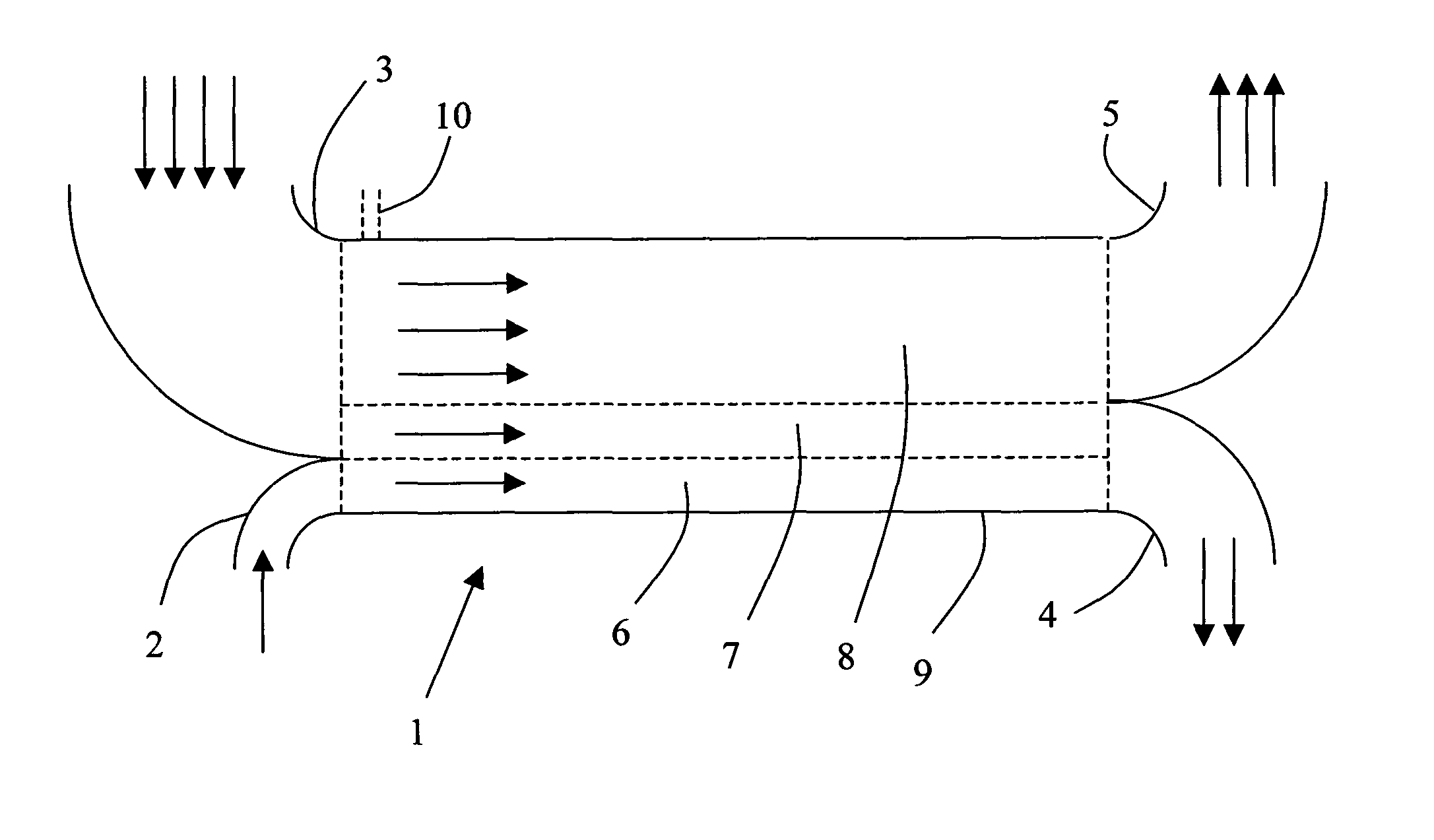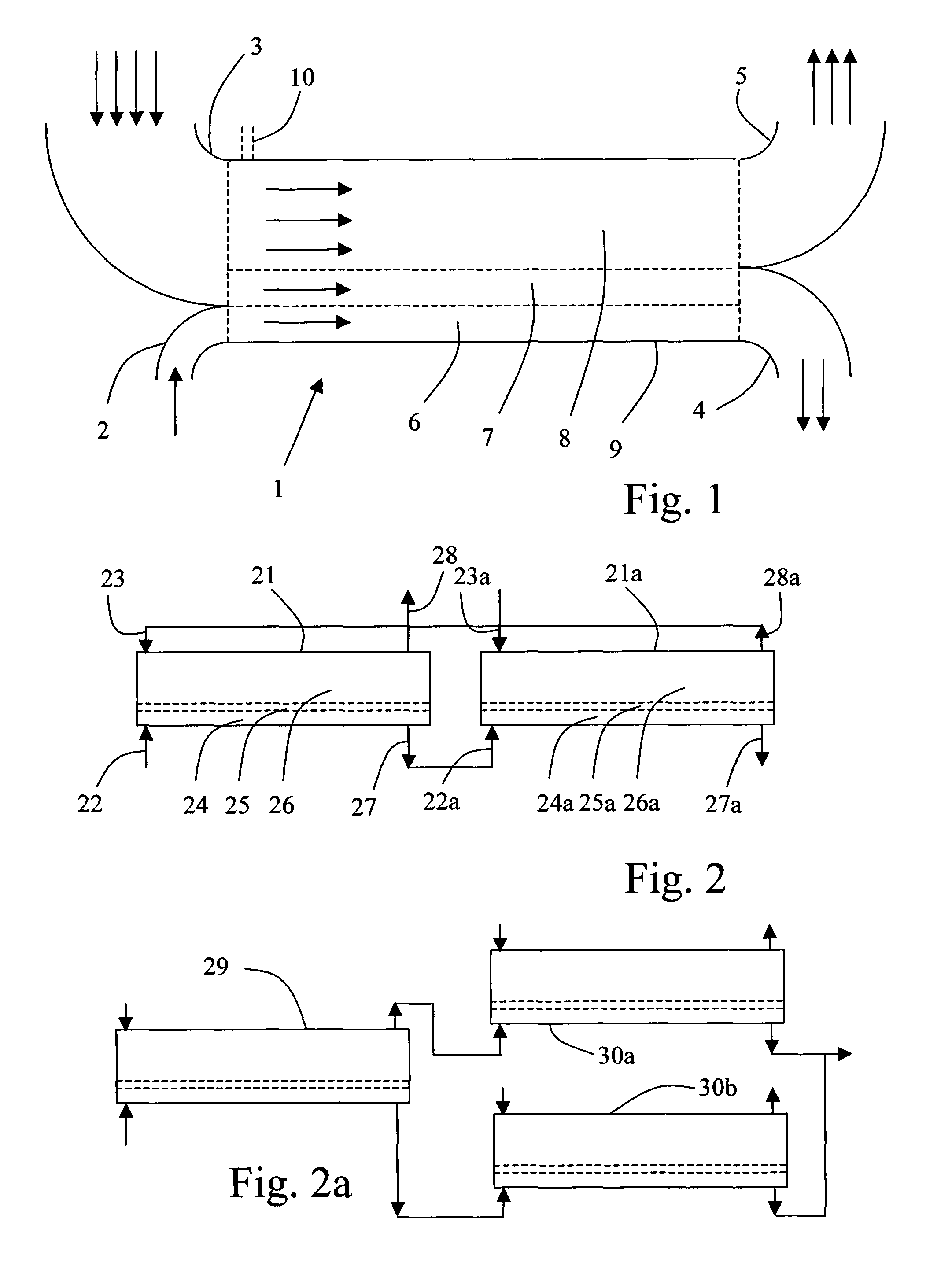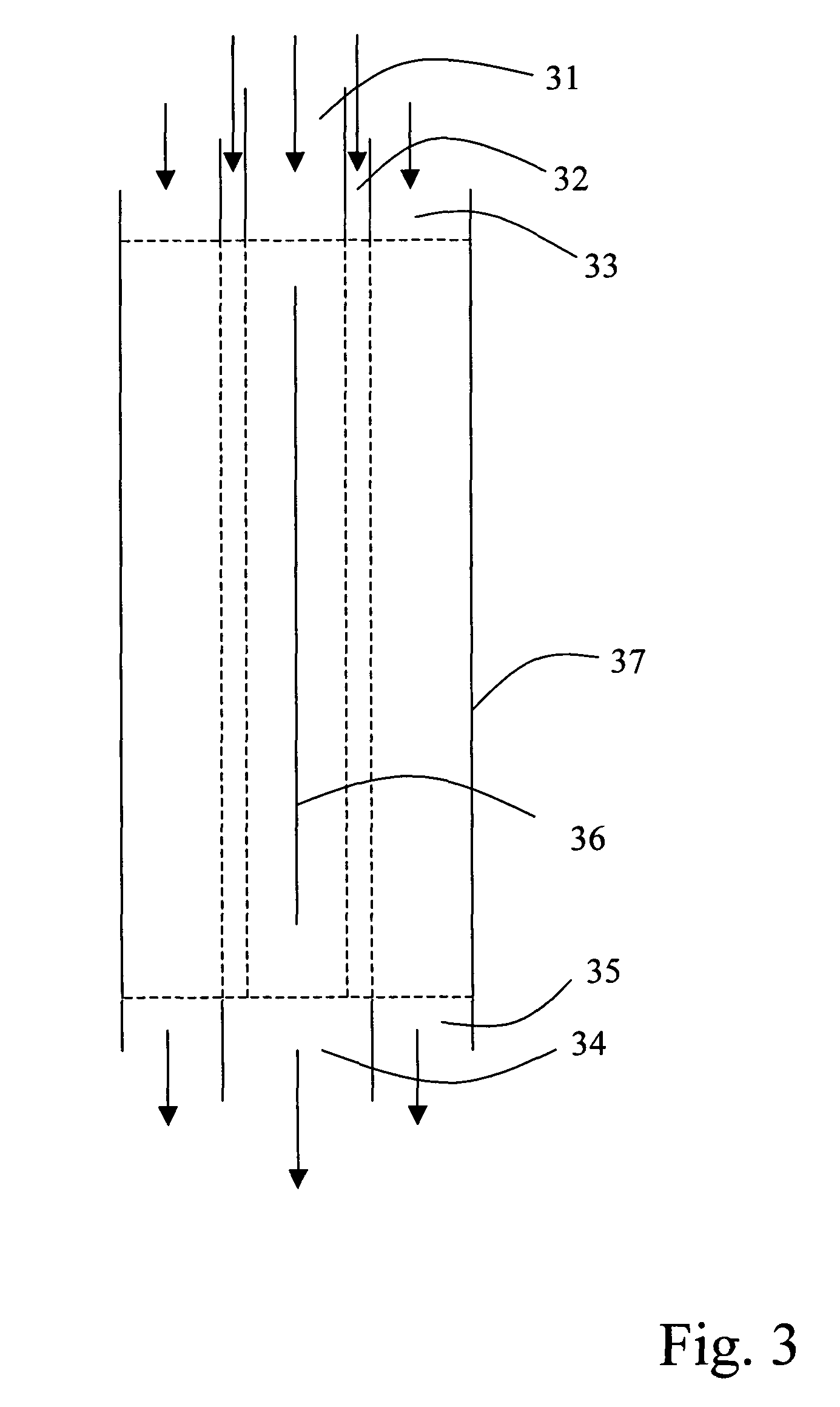Method for differentiation of substances
a technology of substance and a differentiation method, applied in the field of substance differentiation method, can solve the problems of many toxic substances that are poorly removed, suffering and illness of patients, and affecting the treatment of patients, so as to alleviate or eliminate one or more of the above-identified deficiencies and disadvantages
- Summary
- Abstract
- Description
- Claims
- Application Information
AI Technical Summary
Benefits of technology
Problems solved by technology
Method used
Image
Examples
first embodiment
[0055]If it is presumed that the diffusion velocity for albumin is such that albumin diffuses about 10 μm over a period of about 5 seconds, we now have the tools for setting up a process according to the The actual diffusion velocity of albumin depends on a number of factors, such as temperature, viscosity of the fluid, etc. Thus, the albumin diffusion velocity should be measured for each patient and for each treatment occasion, as indicated below. For the description below, the above-mentioned diffusion velocity is taken as an example.
[0056]If the compartment should be used for hemodialysis, the following conditions may be used. As the first fluid flow passing through inlet 3, whole blood is used. In addition to those substances mentioned above, whole blood comprises blood cells and other particles having a size, which is substantially larger than albumin, and thus a diffusion coefficient, which is much lower than albumin. Such particles will be retained in the first body fluid la...
third embodiment
[0073]Since the diffusion of creatinine is smaller than the diffusion of urea, it may be advantageous to use several serial stages and to have a smaller fraction of dialysis fluid in each stage. In a third embodiment, the dimensions for the first and second layers are the same, but the third layer is only 20 μm. Then, the urea and / or creatinine molecules would be diluted by about 2.5 times. Then, a second compartment in series would be required.
[0074]FIG. 2a discloses an embodiment comprising a first compartment 29 which is arranged so that molecules with a diffusion distance smaller than beta-2-microglobulin would be retained in the outlet flow from the lower outlet, which is passed further on to a second compartment 30b, for further separation based on another marker molecule. The outlet from the upper outlet is passed further on to a third compartment 30a for further separation based on other marker molecules. In this way, a desired separation based on the diffusion distance of d...
fourth embodiment
[0089]In a fourth embodiment, shown in FIG. 5, the blood may be filtered in a first stage wherein the blood is passed through a conventional filtration membrane. Then, the filtrate can be exposed to the diffusion method according to the above embodiments. The filtrate having small solutes removed by the compartment 46 can be returned to the patient together with the retentate.
[0090]A conventional blood filter 40 comprises a compartment 41 having a filtration membrane 42. Blood is introduced into the compartment 41 via an inlet 43 and the retentate is returned to the body via outlet 44. A filtrate is removed from the filtration side of the membrane via outlet 45. The filter membrane is designed to pass molecules smaller than albumin, for example by having a pore size smaller than about 5 nm. A portion of the filtrate is removed to a waste via outlet 45a. The rest of the filtrate is passed to a diffusion unit according to any of the embodiments such as compartment 46, which comprises ...
PUM
| Property | Measurement | Unit |
|---|---|---|
| molecular weight | aaaaa | aaaaa |
| size | aaaaa | aaaaa |
| diameter | aaaaa | aaaaa |
Abstract
Description
Claims
Application Information
 Login to View More
Login to View More - R&D
- Intellectual Property
- Life Sciences
- Materials
- Tech Scout
- Unparalleled Data Quality
- Higher Quality Content
- 60% Fewer Hallucinations
Browse by: Latest US Patents, China's latest patents, Technical Efficacy Thesaurus, Application Domain, Technology Topic, Popular Technical Reports.
© 2025 PatSnap. All rights reserved.Legal|Privacy policy|Modern Slavery Act Transparency Statement|Sitemap|About US| Contact US: help@patsnap.com



